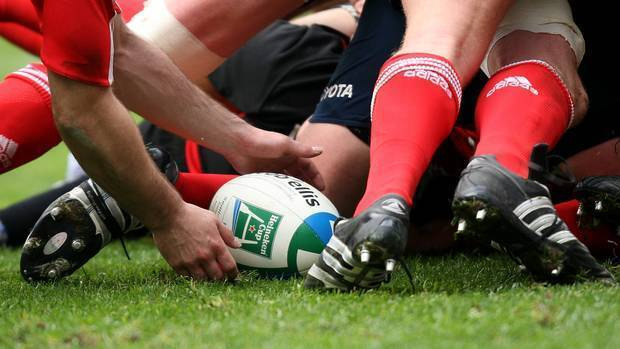
Dr. Adam Garnett, a sports and exercise medicine (SEM) consultant at the Jersey Sports Medicine Clinic, divides his time between treating rugby players suffering from acute trauma injuries and triathletes and runners with overuse injuries. He explained how the use of point-of-care ultrasound has changed the way he manages sports injuries.
My interest in sports and exercise medicine started 20 years ago when I was a GP in Bath and got involved with the rugby club. After moving to Jersey, I joined the Jersey Sports Medicine Clinic, and also developed my own private practise. I look after a lot of Jersey’s sports teams, splitting my time between professional rugby players with cases of acute trauma – mainly due to impact injuries – and athletes and runners, where overuse injuries such as plantar fasciitis and tendonitis are common.
I visit Jersey Rugby Football Club most weeks during the season, using ultrasound to assess and diagnose injuries. Typically, these will be acute injuries, such as medial collateral ligament tears in the knee and talofibular ligament strains in the ankle. Two years ago, I bought a FUJIFILM Sonosite Edge®, which is invaluable for diagnosis and monitoring progress and healing, allowing me to provide direct feedback. I can visualise oedoemas and tendonitis, establishing the true extent of the injury and tailoring my advice accordingly, as well as providing reassurance where injuries are not as bad as first thought. This is good for the medical and physiotherapy teams, as well as the players and coaches, as there is often a lot of pressure on returning to sport.
Ultrasound has a role to play in patient education too. For example, if a patient has shoulder impingement syndrome I can demonstrate the correct shoulder posture to prevent closing off the subacromial space, which traps the tendon. Patients find ultrasound fascinating; I even get ultra-athletes wanting me to scan their Achilles and patella tendons, simply because they are interested to know what is going on in an extreme sports situation.
Outside of the clinic, I take the Edge to rugby matches, where it is invaluable for post-match assessment of injuries, allowing me to get the clinical picture without delay. With knee and ankle injuries, I usually wait 24 hours to see what the state of play is before making a treatment plan. I often recommend following the PRICE (pressure, rest, ice, compression and elevation) protocol, waiting a few days to let the injury settle down, and then scanning the area to determine the best course of action.
Another area of sports and exercise medicine where ultrasound is particularly beneficial is the injection of anti-inflammatory medications to reduce swelling and inflammation. Historically, this has been done blind, relying on physical examination and an understanding of anatomy.
However, there is always some risk of incorrect needle placement, making ultrasound guidance invaluable. It is quite amazing to be able to see the exact position of the needle, giving me confidence that I have placed the injection precisely. I find ultrasound guidance especially useful for treatment of shoulder injuries. It enables me to inject larger volumes – as much as 10ml – of, for example, marcaine into the subdeltoid space, as I know with certainty that the needle placement is correct.
Point-of-care ultrasound is a major tool in sports and exercise medicine, and has enhanced my practise, improving patient diagnoses and the clinical management of sporting injuries. It helps me to determine the most appropriate rehabilitation programme, allowing the patient to return to sport as early as possible, as well as guiding the administration of joint injections.
I have used the Edge for two years now, and it has become part and parcel of injury management, particularly at the rugby club, giving me immediate, on-site access to good quality ultrasound imaging. Its robustness and portability make it ideal for use in the sporting arena, and I used it extensively during last year’s Island Games – attended by over 3,000 athletes from various sports – and at the recent European touch rugby championships. It has revolutionised the way I manage sports injuries.
Learn More About the Sonosite Edge II
The Edge II features an easy-to-use interface for intuitive access to frequently used functions like gain and a wide-angle display with an anti-reflection coating for minimal adjustments during viewing. Learn more about the Sonosite Edge II here.


